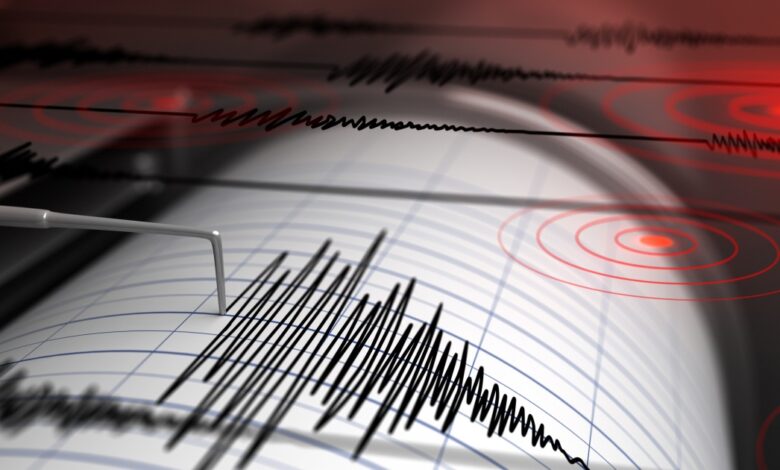The biggest earthquake in history nearly destroyed a civilization

Scientists have identified the location of the largest known earthquake in history, according to a new article in the journal Science Advances. Coming in at a magnitude of 9.5, the earthquake managed to propel boulders the size of cars a kilometer inland and caused tsunamis throughout the Pacific Ocean.
The earthquake occurred about 3,800 years ago in a region of northern Chile where earthquakes are actually quite rare: a “seismic gap” where the Nazca and South American plates meet. Seismic gaps are regions that are geologically inactive today but have produced large earthquakes in the past.
A devastating toll
It’s notoriously difficult to predict earthquakes, especially in areas that don’t experience them often. But understanding them is crucial for our safety. In addition to fires, landslides, and damage to infrastructure, earthquakes can cause tsunamis that extend across the globe. Because of these devastating primary and secondary effects, earthquakes have killed 700,000 people and caused billions of dollars in damage since 1900.
Understanding how societies cope and adapt to devastating earthquakes was the goal of a team of international scientists, led by Professor Diego Salazar of the Department of Anthropology at the University de Chile, who published the aforementioned paper.
Megathrust quakes can be the strongest and most devastating on the planet. They occur at the boundary of two plates, when one is pushed under another. The longer the plate boundary that slips, the larger the earthquake can be. Northern Chile has a high potential for this type of earthquake. Yet, earthquakes in the area have been rare, only happening once every 250 to 10,000 years, with the most recent occurring in 1877. That earthquake was a monstrous magnitude 8.8.
The largest earthquake in world history
Finding historical evidence of earthquakes in northern Chile is challenging. Typically, evidence can be found in deposits from tsunamis. However, the world’s driest desert, the Atacama, leaves little opportunity for sediments to accumulate. What sediments do accumulate often are quickly eroded by the strong floods, storms, and winds typical of the area.
Despite this challenge, eight historical sites containing evidence of the 3,800-year-old-quake earthquake were found by the authors of the study. In one case, a structure was toppled seaward, most likely pushed over by a retreating tsunami. In others, marine sediment and evidence of marine animals were found a significant distance inland, brought there by the wave. In many of the sites, rocks and land were violently destroyed.
At a magnitude of 9.5, this ancient earthquake was the largest in world history. Though the Valdivia earthquake of 1960 was approximately the same magnitude (9.4 to 9.6), it occurred due to a rupture that was 800 km long, while the ancient earthquake had an even longer rupture of 1,000 km.
Evidence of the resulting tsunami was found all over the world, affecting areas as far away as Australia, New Zealand, Vanuatu, and possibly even Japan and Russia. Even in New Zealand, the tsunami was so strong that massive boulders were carried about a kilometer inland.
Destroying society
The Atacama, the driest desert in the world, gets less than a millimeter of rain per year. What little plant life exists gets its moisture from fog. However, even though the area is an inhospitable desert, northern Chile hosted a thriving maritime society. People in the region lived there for 12,000 years, living off the plentiful fish in the nearby ocean.
For these people, the earthquake and resulting tsunami were devastating. Villages were abandoned as people moved inland. While it is hard to pin down the death toll for this particular earthquake, the authors point to other massive earthquakes and tsunamis in the past, which were capable of killing more than three-quarters of the population of seaside villages.
Some of the coastal areas in northern Chile were not repopulated for millennia afterward, showing that there was a long-lasting memory of this tragic event.
The fact that these earthquakes are so rare makes preparing for them challenging. Not only are they nearly impossible to predict, but their rarity means that society loses its collective memory of the trauma. But whether we remember or not, they will continue to happen, so scientists hope to understand how civilization can cope when another once-in-a-millennium catastrophe strikes.




